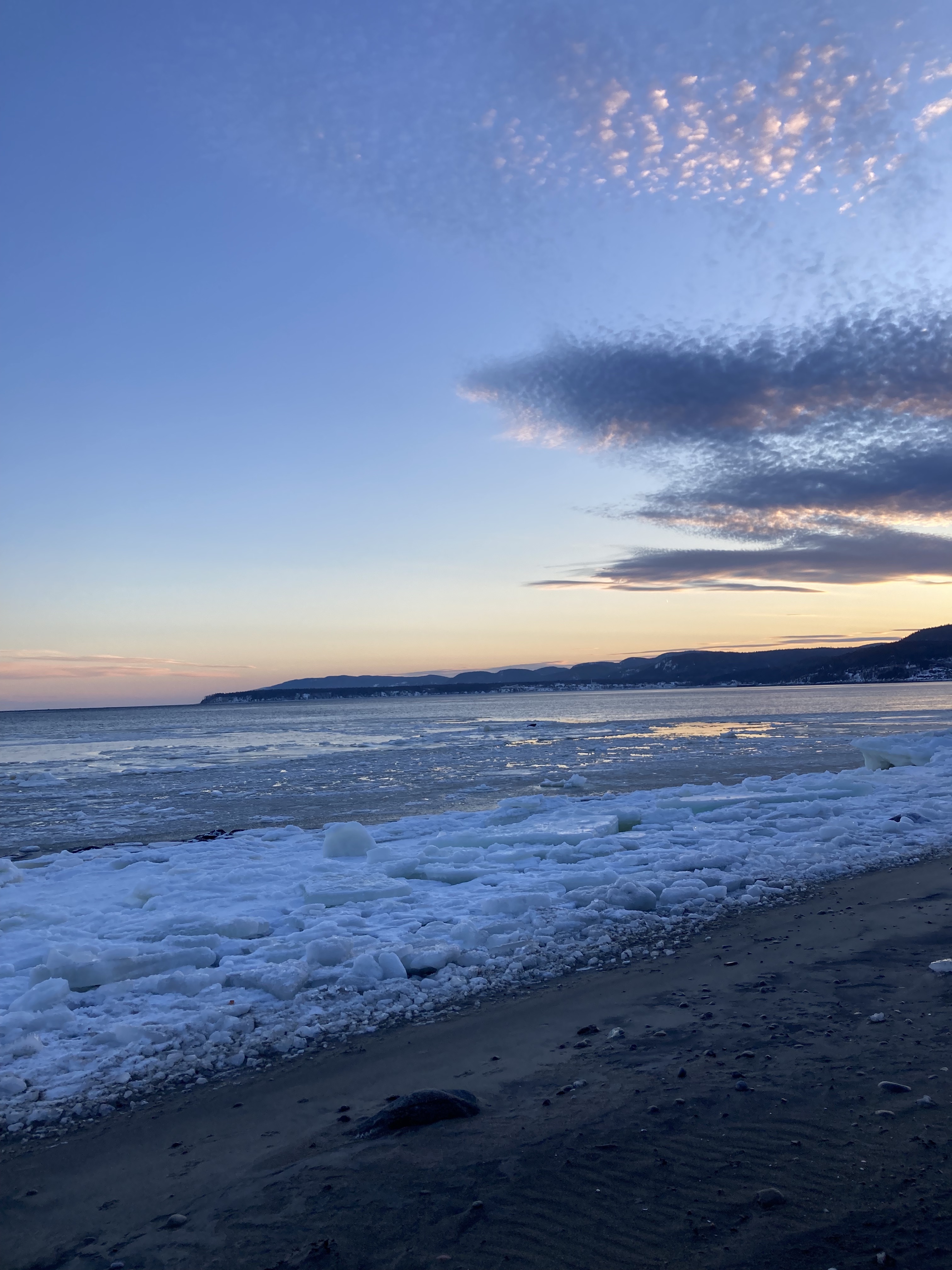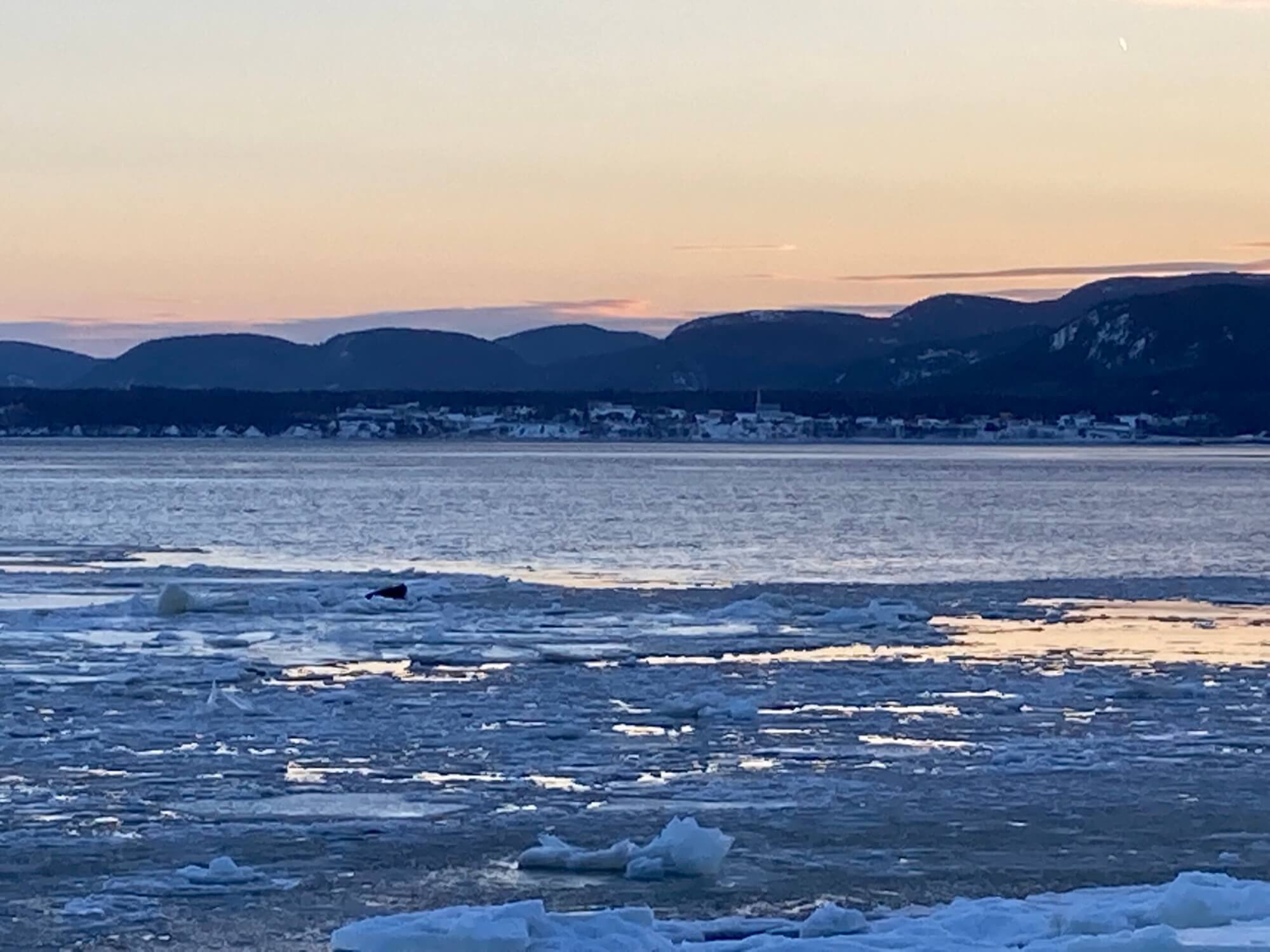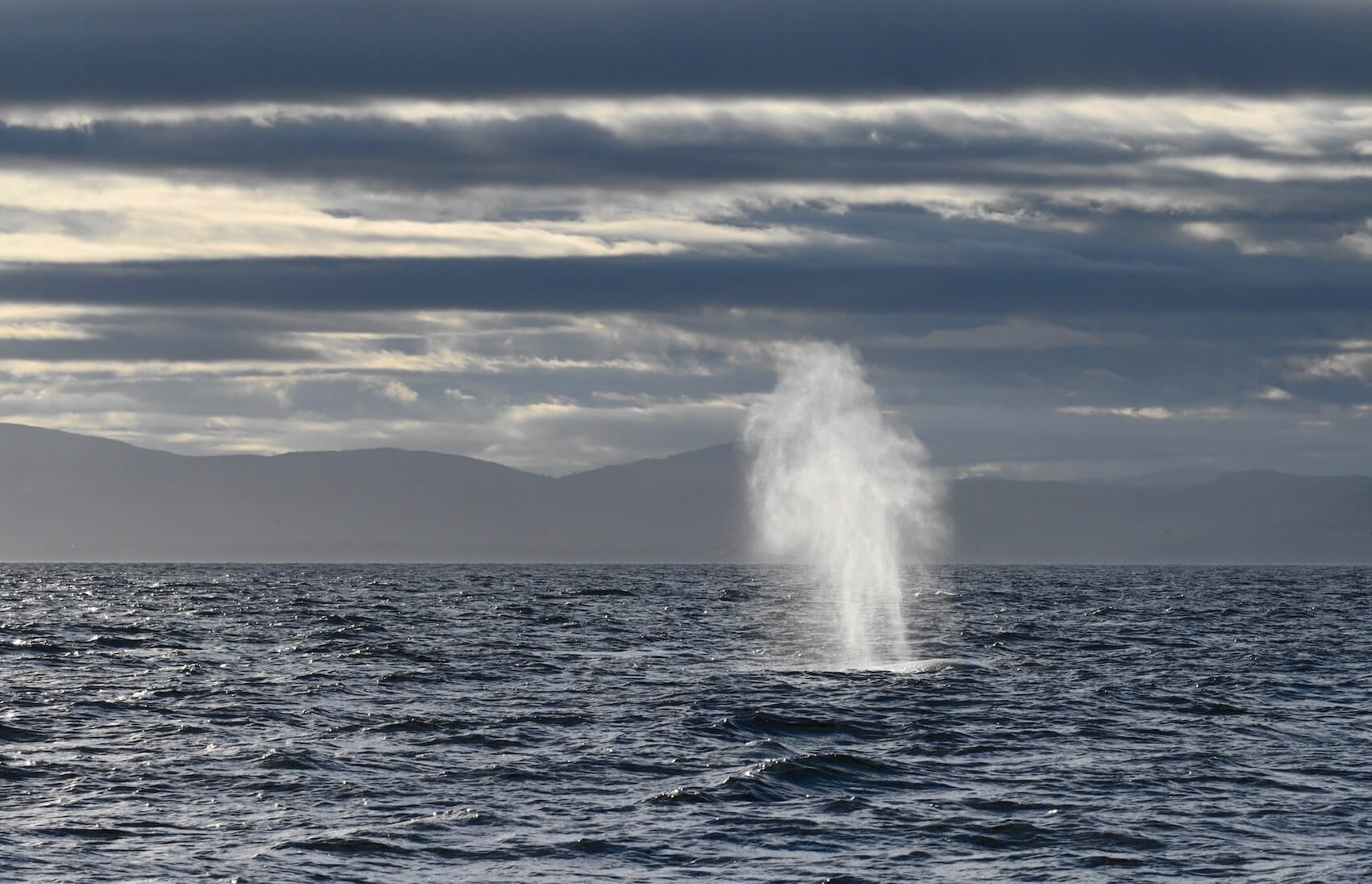It seems that the biggest giant of all has paid a little visit to Les Escoumins! In fact, several local residents reportedly had the chance to admire a blue whale swimming near the coast in recent days. The rest of the week was rather quiet, with just a few seals spotted here and there resting on patches of ice.
The animal was observed between the ferry terminal and the small islands known as Îlets Boisés. The animal even showed its tail when it dove, a behaviour exhibited by less than a quarter of all blue whales. Could it be one of the individuals seen in recent weeks near Godbout or Franquelin? It likely is, but it’s impossible to say for sure, since photos would be needed to be able to identify the animal.
Daring whales
In the nutrient-rich waters of the St. Lawrence, it is not uncommon for blue whales to extend their stay as long into the winter as possible. With all these whale sightings in recent weeks, several readers have wondered whether it might be dangerous for these whales to venture near the ice floes. This concern is not unfounded! These behaviours can indeed be risky.
We may notably recall a few regrettable incidents where blue whales found themselves trapped by the ice in the Gulf of St. Lawrence. In 2014, nine whale carcasses were found off the coast of Newfoundland (article in French). The deaths of these animals were all the more dramatic given that the Northwest Atlantic blue whale is endangered. In the winters between 1869 and 1992, no fewer than 41 blue whale mortalities have been documented by the Whale Research Group along the west coast of Newfoundland.
In an article published in 2018 on Whales Online, it is also noted that “According to Jack Lawson, a researcher with Fisheries and Oceans Canada, winds are responsible for creating these whale traps. First, winds disperse the ice, which allows whales to move and feed; however, when the winds shift direction, huge chunks of ice can join together and trap the cetaceans, even blocking their access to oxygen.”
However, it is highly unlikely that such an incident will occur in 2024 in Quebec. Higher-than-normal seasonal temperatures have led to low ice levels in the St. Lawrence. Furthermore, historically, no mortality event of this type has ever been recorded in the estuary.
Harbour seals
Besides large whales, the presence of a few seals has also been reported near Sandy Beach in Gaspé Bay. Under a gorgeous setting sun, a harbour seal was seen resting on a patch of ice near Pointe-Rouge in Tadoussac. Undoubtedly, pinnipeds have a very different relationship with the sea ice than whales do.
Thanks to all our collaborators!
Special thanks go out to all our observers who share their love for marine mammals with us! Your encounters with cetaceans and pinnipeds are always a pleasure to read and discover.
On the water or from shore, it is your eyes that give life to this column.
Patrice Corbeil
Laetitia Desbordes
Robert Michaud
Diane Ostiguy
Renaud Pintiaux
Pascal Pitre
Andréanne Sylvain
Marielle Vanasse
Patrick Weldon
And all those we left out!
Additionally, we would like to acknowledge the following teams that also share their sightings:
Mingan Island Cetacean Study (MICS)
Marine Mammal Observation Network (ROMM)
Quebec Marine Mammal Emergency Response Network (QMMERN)
Group for Research and Education on Marine Mammals (GREMM)
Would you also like to share your observations?
Have you seen any marine mammals in the St. Lawrence? Whether it’s a spout offshore or just a couple of seals, drop us a line and send your photos to [email protected]!






